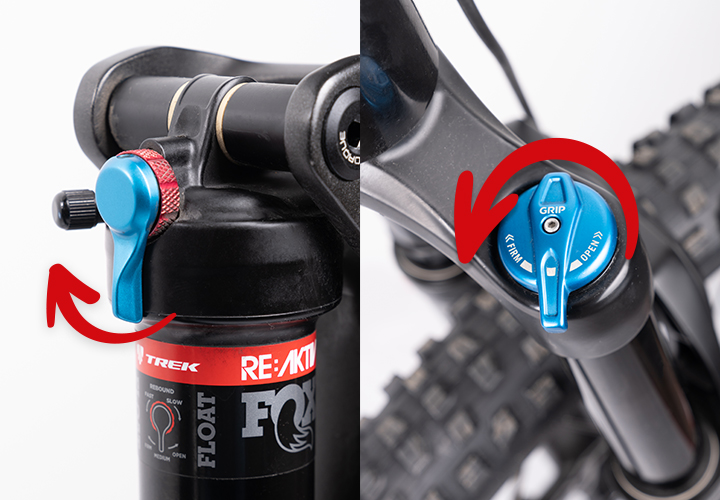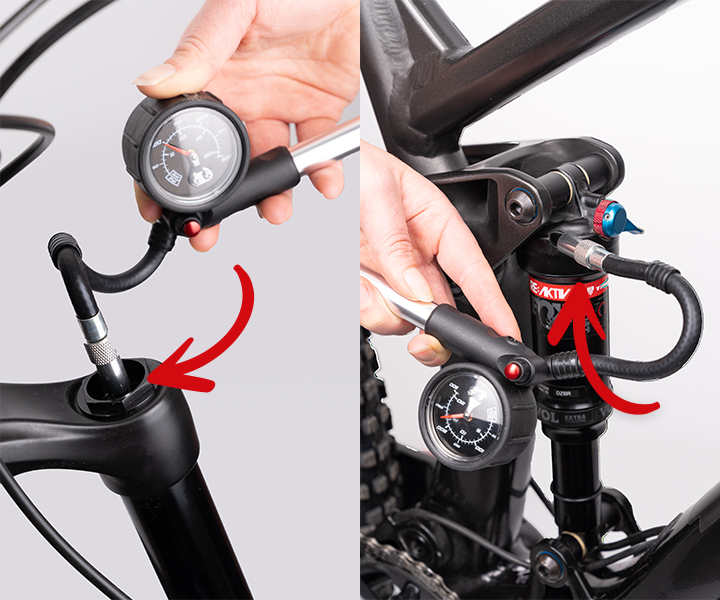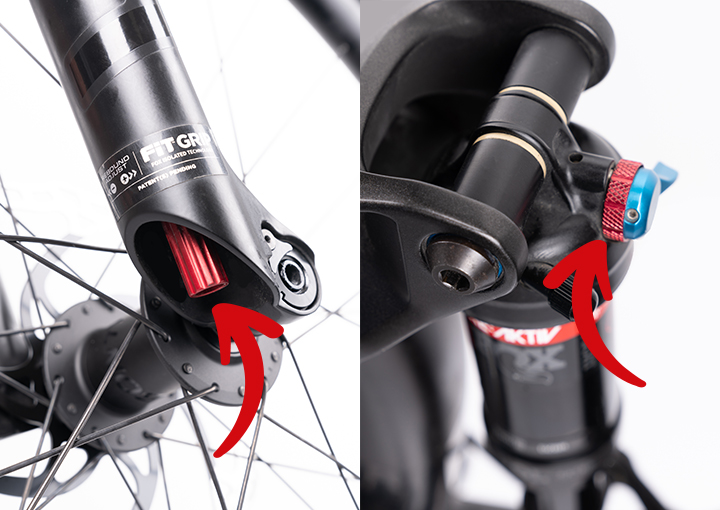How to: set up your suspension

We want to make sure you get the most of your full-suspension bike, so here are the most important things about suspension forks, shocks and suspension settings.
A well set up suspension ensures that you feel comfortable on your bike and is easily adjusted at home. As it's best to optimize your settings over several test rides, it might take a little time and a few tries, but learning to make the adjustments yourself will help you in the long run.
Many manufacturers have guidelines for basic suspension settings on their websites, but the more experienced you are as a rider, the more you will want to adjust the bike to your preferences.
But before we start, here are a few tips based on our own experience:

What can I adjust my suspension fork and shock?
Not all suspension forks and shocks are adjustable. However, if your components can be adjusted, you usually have the following options:

Lock Out
Complete locking of the suspension.
Your suspension elements are completely blocked and do not compress.

Compression
The suspension is open, semi-open or closed.
Your suspension compresses on a sliding scale.

Spring weight
This regulates how much pressure is in the air chamber (air shock) or how hard the spring is (coil shock).

Rebound control
This regulates how quickly or slowly the suspension springs back in response to shocks.
Lock Out
This is the simplest of all settings and blocks your suspension element more or less completely.
You should use this setting when no suspension is necessary and you want to convert as much energy in forward momentum as possible. This could be when riding uphill or on tarmac roads.
The Lock Out is a small lever on the fork and on the shock, often coloured, which you can flip.


Compression
Compression is an extension of the Lock Out. Many bikes not only have the "Open" and "Closed" position, but also a "Half Open" setting.
This can be set either by a third position of the lever (on shocks) or a wheel on the top right hand side of the fork.
This is particularly helpful in technical uphill sections or flat trails where pedalling is also required.
Air pressure / Coil weight
In most suspension forks and shocks, an air chamber is used to absorb shocks. Because the air is trapped and can't escape, an air suspension provides cushioning even during the hardest impacts.
Adjustment: to properly adjust the amount of air in your elements, you'll need a shock pump. Please be aware that you can't make adjustments with a regular tire pump. The valve is usually on the left side of the suspension and protected by a cap. You can unscrew these by hand. Now you can add or release air with the pump to adjust the pressure in the air chamber. The more air in the chamber, the harder the suspension. But softer is not necessarily better!
If you own a Trek or Specialized bike, follow the guidelines provided or use the apps and guides we've linked at the bottom of the page. To find a good starting pressure for any other brand, push the little rubber ring on your suspension all the way to the bottom. Sit gently on your bike without rocking, get off and check how much the rubber ring has moved. You have a good starting set up when the element compressed by 25-30%. Add or remove air as necessary to achieve this percentage. If your suspension element has no markings, use a folding rule or ruler to measure the compression.


Rebound
Rebound refers to how quickly or slowly the spring element returns to its original position after an impact. If the rebound is too slow, it cannot return to its initial position quickly enough to deal with repeated impacts and is unable cushion every bump. If the rebound is too fast, the bike will feel very nervous.
Adjustment: To adjust the rebound in a fork use the dial below the stem on the right side. Since shocks can be build into the frame in many different ways, there is no set location, but are always at one or the other end of the element. We recommend turning the dial all the way in one direction first and compressing the wheel quickly. Pay attention to how it behaves. Does it jump off the ground? Is it sluggish when it comes off the ground? Now turn the wheel all the way in the opposite direction, the difference should be noticeable.
A good starting position is when the wheel is neither bouncing back up, nor sluggish on rebound. Rebound is a balancing act and it may take a few tests until you find the right rebound setting for you.
Apps and guides for your suspension setup
Most manufacturers offer various tools for adjusting the suspension. Here you can either find the recommended guide values for your height and weight or use an app to calculate the necessary settings for you.
Trek suspension calculator
https://www.trekbikes.com/at/de_AT/suspension-calculator/
Specialized suspension calculator
https://www.specialized.com/de/de/suspension-calculator/app
Fox Shox Tuning-Guides
https://www.foxracingshox.de/tuningguide
Rock Shox Trailhead App
